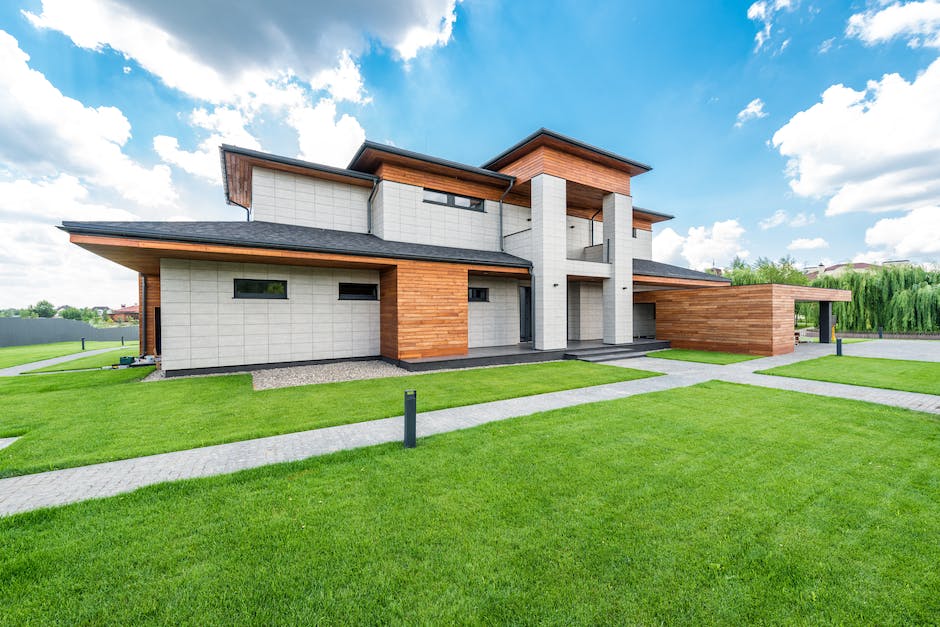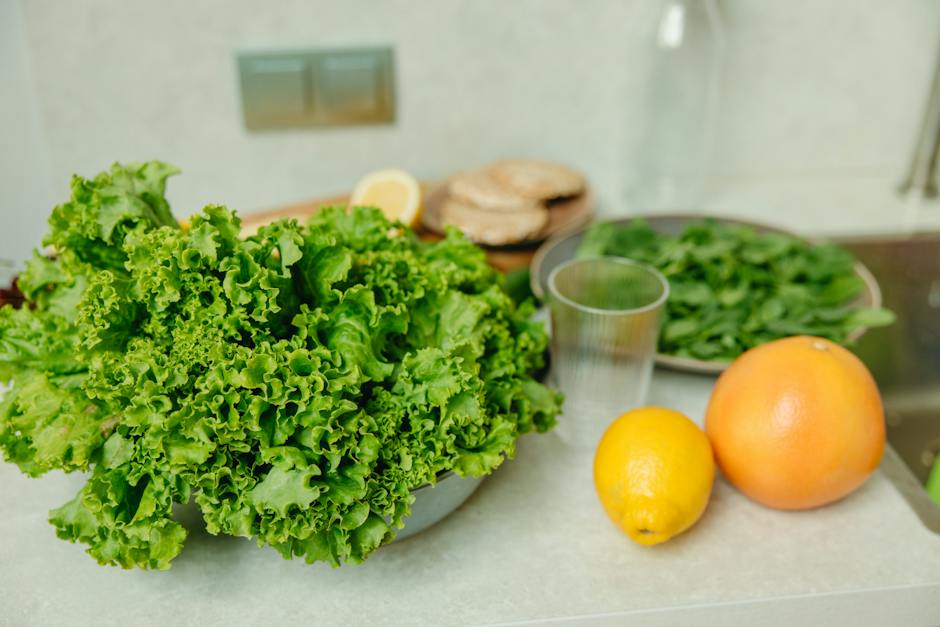How To Grow Hydroponic Lettuce
Hydroponic farming has gained significant attention in recent years as a sustainable and efficient method of growing plants, including lettuce. This innovative technique involves growing plants without soil, wherein the roots are submerged in a nutrient-rich water solution. With hydroponics, lettuce can be cultivated in controlled environments, providing optimal conditions for growth and ultimately ensuring a high-quality end product.
One of the key advantages of hydroponic lettuce cultivation is the ability to control various environmental factors such as temperature, light, and nutrient concentrations. This control allows growers to eliminate or reduce common issues associated with traditional soil-based agriculture, such as pests, diseases, and unpredictable weather conditions. By creating an ideal setting, hydroponic farming ensures consistent and reliable lettuce production year-round.
Additionally, hydroponic systems require less water compared to traditional soil farming methods. In hydroponics, water is reused and recirculated, reducing water consumption by up to 90% compared to conventional farming. This water conservation aspect makes hydroponics an environmentally friendly option for lettuce cultivation, especially in regions facing water scarcity or drought.
Another benefit of growing lettuce hydroponically is the space-saving nature of the technique. Since plants receive all their essential nutrients directly from the water solution, they do not require extensive root systems like soil-grown plants. Therefore, hydroponic systems can be designed to maximize vertical space and increase crop density. This aspect is particularly advantageous for urban settings or areas with limited land availability.
Moreover, hydroponic lettuce is known for its exceptional taste, texture, and nutritional value. The controlled environment allows farmers to optimize growing conditions, resulting in consistently crisp and flavorful lettuce leaves. Additionally, hydroponic lettuce tends to contain higher levels of vitamins, minerals, and antioxidants compared to conventionally grown lettuce, making it a healthier choice for consumers.
Overall, hydroponic lettuce cultivation offers numerous advantages over traditional soil-based farming methods. By harnessing the power of technology and precision agriculture, growers can achieve higher yields, better quality produce, and reduced environmental impact. In the following sections of this blog post, we will delve deeper into the various steps involved in successfully growing hydroponic lettuce, enabling you to embark on your own journey toward sustainable and professional lettuce farming.
Understand the basics of hydroponics (definition, working principle, and advantages)

Hydroponics is a method of growing plants without the use of soil. Instead, plants are placed in a nutrient-rich water solution that provides them with all the necessary minerals and elements for their growth. This innovative technique is gaining popularity due to its numerous advantages.
The working principle of hydroponics revolves around the idea that plants receive nutrients directly from water, bypassing the need for soil as a medium. Growing mediums such as perlite, coconut husks, or rockwool are used to support the plants and allow the roots to anchor themselves. Nutrient solutions are carefully formulated to provide plants with a balanced diet, ensuring optimal growth.
One of the major advantages of hydroponics is efficient water usage. Unlike conventional farming methods, where excessive water is often required, hydroponics recirculates the water, minimizing waste. This makes it a sustainable choice for farming, especially in regions where water scarcity is a concern.
Another benefit of hydroponics is its ability to maximize plant growth in a limited space. By eliminating the need for soil, plants can be densely packed, increasing crop yield per square foot. This makes hydroponics an ideal option for urban farming or indoor gardening, where space is limited.
Hydroponic systems also offer precise control over nutrient levels, pH, and temperature, allowing growers to create an optimal environment for plant growth. By monitoring these factors, growers can ensure that plants receive the necessary nutrients at all stages of their growth, resulting in healthier and more productive crops.
Furthermore, hydroponics reduces the risk of soil-borne diseases and pests since the plants are not exposed to contaminated soil. This eliminates the need for chemical pesticides, making hydroponically grown produce healthier and more environmentally friendly.
In summary, hydroponics is a revolutionary method of growing plants without soil, utilizing nutrient-rich water solutions instead. Its advantages include efficient water usage, maximum space utilization, precise control over plant nutrition, and a reduced risk of soil-borne diseases. By understanding the basics of hydroponics, aspiring growers can harness this technique to grow their own hydroponic lettuce and other crops with professional-level results.
Choose the right type of hydroponic system for lettuce cultivation (e.g., deep water culture, nutrient film technique)

When it comes to growing hydroponic lettuce, choosing the right type of hydroponic system is crucial for ensuring successful cultivation. There are various options available, but here are two commonly used systems for growing lettuce: deep water culture (DWC) and nutrient film technique (NFT).
Deep Water Culture (DWC): This method involves suspending the lettuce roots in a nutrient-rich water solution. The plants are placed in net pots with their roots submerged in the water. Oxygen is provided through the use of air stones or diffusers to ensure the roots receive adequate oxygenation. DWC systems are relatively simple and easy to set up, making them a popular choice for beginners in hydroponics. They are also suitable for larger-scale lettuce production.
Nutrient Film Technique (NFT): NFT systems work by continuously delivering a thin film of nutrient solution over the roots of the lettuce plants. In this system, the plants are usually placed on a sloped tray or channel, allowing the nutrient solution to flow through. The excess solution is collected and recirculated, providing a constant supply of nutrients to the plants. NFT systems are known for their water efficiency and are particularly effective for smaller-scale lettuce cultivation.
When deciding on the type of hydroponic system for lettuce cultivation, consider factors such as your available space, budget, and level of expertise. Both DWC and NFT systems offer advantages, so choose the one that aligns with your specific requirements and resources.
Regardless of the system you choose, it’s essential to provide optimal growing conditions for lettuce. This includes maintaining the appropriate pH and nutrient levels in the water solution, providing adequate lighting (either natural or artificial), and ensuring proper ventilation and temperature control in your growing environment.
By carefully selecting the hydroponic system that suits your needs and following the necessary maintenance practices, you can create a thriving environment for growing hydroponic lettuce.
Select suitable lettuce varieties for hydroponic growth (consider leafy green options like butterhead, romaine, or loose-leaf)
Lettuce is one of the most popular crops for hydroponic farming due to its ability to thrive in nutrient-rich water solutions. When choosing lettuce varieties for hydroponic growth, it is important to consider factors such as leaf texture, taste, and growth habit. Here are some suitable lettuce varieties that are ideal for hydroponic cultivation:
1. Butterhead Lettuce: Butterhead lettuce, also known as Bibb or Boston lettuce, is well-suited for hydroponic systems. It forms loose, soft, and tender leaves that have a buttery texture and a mild, slightly sweet taste. Butterhead lettuce varieties like ‘Buttercrunch’ and ‘Bibb’ are popular options among hydroponic growers.
2. Romaine Lettuce: Romaine lettuce, characterized by its elongated leaves and crisp texture, is another great choice for hydroponic cultivation. It has a slightly stronger flavor compared to butterhead lettuce. Varieties like ‘Little Gem’ and ‘Romaine Paris Island’ are commonly grown in hydroponic setups.
3. Loose-Leaf Lettuce: Loose-leaf lettuce varieties are known for their colorful and delicate leaves that are easy to harvest. These lettuces do not form a tight head, allowing for continuous harvesting of individual leaves throughout the growing season. ‘Salad Bowl,’ ‘Red Sails,’ and ‘Lollo Rossa’ are popular loose-leaf lettuce varieties suitable for hydroponics.
When selecting lettuce varieties for hydroponic growth, it is essential to choose cultivars that are known for their disease resistance, fast-growing nature, and suitability for controlled environments. Additionally, look for varieties that are suitable for the specific hydroponic system you are using, such as nutrient film technique (NFT) or deep water culture (DWC).
By carefully selecting appropriate lettuce varieties that are well-suited for hydroponic growing, you can ensure a successful and productive harvest from your hydroponic lettuce garden.
Gather necessary materials and equipment for setting up a hydroponic lettuce garden (tanks, pumps, grow lights, pH meters, nutrient solutions)

To successfully grow hydroponic lettuce, it is essential to gather the necessary materials and equipment required for setting up a hydroponic garden. Investing in high-quality equipment will ensure the success and efficiency of your lettuce production. Here are some key items you’ll need:
1. Tanks: Choose durable and leak-proof tanks that can hold the nutrient solution and support the growing lettuce. The size and number of tanks will depend on the scale of your hydroponic garden.
2. Pumps: Consider getting reliable water pumps to circulate the nutrient solution through the system. A submersible pump will work best for most setups, but do your research to find the one that fits your specific needs.
3. Grow Lights: As lettuce requires specific light conditions to thrive, you will need a quality LED or fluorescent grow light setup. Make sure the lights are adjustable and have a broad spectrum to provide the necessary lighting for both vegetative and flowering stages.
4. pH Meters: Maintaining the correct pH level is crucial for the overall health of your lettuce plants. Invest in a reliable and accurate pH meter to regularly monitor and adjust the pH of your nutrient solution. This will help ensure optimal nutrient uptake for your plants.
5. Nutrient Solutions: Hydroponic lettuce requires a balanced nutrient solution to grow efficiently. Purchase a suitable hydroponic nutrient solution that contains essential elements such as nitrogen, phosphorus, and potassium, along with trace minerals. There are various ready-made nutrient mixes available specifically formulated for hydroponic lettuce.
6. Growing Medium: In a hydroponic system, a growing medium is required to support the lettuce plants. Popular choices include perlite, coconut coir, or rockwool cubes. Choose a sterile and lightweight medium that can retain moisture while allowing adequate root aeration.
7. Other Essential Tools: Don’t forget to stock up on basic tools like a pH adjuster (such as pH Up and pH Down solutions), clean measuring cups, a thermometer, and a timer for managing the lighting duration.
When gathering your materials, opt for reputable suppliers or manufacturers who specialize in hydroponic systems. Quality equipment will save you time, effort, and potential headaches in the long run, ensuring a successful hydroponic lettuce garden.
Prepare the growing area by ensuring proper lighting, temperature, and ventilation conditions

To grow hydroponic lettuce successfully, it is crucial to prepare the growing area properly. This involves ensuring that the lighting, temperature, and ventilation conditions are optimal for the lettuce plants to thrive.
1. Lighting:
Hydroponic lettuce requires adequate and consistent lighting to support its growth. To provide the necessary light, consider using LED grow lights or fluorescent lights specifically designed for indoor gardening. These lights should be positioned at the appropriate distance above the plants to mimic natural sunlight. Generally, lettuce needs around 12-16 hours of light each day. Installing a timer can help maintain a consistent light schedule, ensuring the plants receive the required amount of light.
2. Temperature:
Maintaining a stable temperature is essential for hydroponic lettuce. Lettuce grows best in temperatures between 60-70°F (15-21°C), and temperatures above 75°F (24°C) can affect the plant’s growth negatively. Use a thermometer to monitor the temperature in the growing area regularly. To regulate the temperature, you can make use of fans, air conditioners, or heaters, depending on the environment and climate. Proper insulation can also help in maintaining a stable temperature throughout the year.
3. Ventilation:
A well-ventilated growing area is crucial for hydroponic lettuce as it helps maintain a balanced humidity level and prevents the accumulation of stagnant air. Stagnant air can create ideal conditions for pests and diseases to thrive. Ventilation can also help regulate the temperature and distribute carbon dioxide evenly, promoting healthier plant growth. Make use of exhaust fans, intake fans, or oscillating fans to ensure there is a constant flow of fresh air throughout the growing area.
Before initiating the hydroponic lettuce growing process, take the time to set up the growing area correctly. By providing the appropriate lighting, maintaining the ideal temperature, and ensuring adequate ventilation, you are creating the perfect environment for your lettuce plants to flourish. Remember, a well-prepared growing area is a solid foundation for a successful hydroponic lettuce cultivation endeavor.
Establish the hydroponic system and learn about its maintenance requirements (monitoring pH levels, nutrient solution changes, preventing algae growth)

When it comes to growing hydroponic lettuce, establishing a hydroponic system is the essential first step. This system eliminates the need for soil and allows lettuce to grow in a nutrient-rich water solution. Before diving into the maintenance requirements, it is crucial to set up the system correctly to ensure optimal growth.
Start by choosing a suitable hydroponic system for your space and needs. There are various options available, such as Deep Water Culture (DWC), Nutrient Film Technique (NFT), or Aeroponics. Research each system and decide which one aligns best with your goals and resources.
Next, gather all the necessary equipment, including a reservoir (for the nutrient solution), a pump, grow trays, and net pots or Rockwool cubes to hold the lettuce plants. Ensure that all components are clean and in good condition before setting them up.
The first maintenance requirement in a hydroponic system is monitoring the pH levels of the nutrient solution. Lettuce prefers a slightly acidic environment, with a pH range of 5.5 to 6.5. Regularly check the pH using a pH meter or test strips and adjust it if needed using pH up or down solutions. Maintaining proper pH levels is crucial for nutrient uptake and overall plant health.
Another essential aspect of hydroponic lettuce growth is changing the nutrient solution regularly. As the plants uptake the nutrients, the solution becomes depleted, leading to nutrient deficiencies. It is recommended to change the solution every 1-2 weeks or as indicated by the manufacturer’s instructions. This ensures that the plants receive a fresh supply of nutrients for vigorous growth.
Preventing algae growth is also vital for a successful hydroponic lettuce system. Algae can compete with the plants for nutrients and impact their growth. To minimize algae growth, keep the grow area clean and free from debris. Ensure that light does not penetrate the nutrient solution by using dark-colored or opaque reservoirs. If needed, consider using an algaecide or adding a UV sterilizer to the system.
Regular monitoring and maintenance are essential in hydroponic lettuce growing. Stay observant of the plant’s overall health, including leaf color, growth rate, and any signs of pest or disease infestation. Making adjustments and troubleshooting as necessary will result in healthy and thriving lettuce crops.
Plant lettuce seeds or seedlings in the hydroponic system (spacing, water depth, and recommended planting techniques)

When it comes to growing hydroponic lettuce, one of the crucial steps is planting lettuce seeds or seedlings in the hydroponic system. This step sets the foundation for healthy growth and optimal yield. Here are some essential factors to consider when it comes to planting lettuce in a hydroponic system.
Spacing is an important aspect to get right from the beginning. Depending on the variety of lettuce and the required size at maturity, you should leave enough space between the plants to ensure proper air circulation and prevent overcrowding. Generally, a spacing of about 8-10 inches between plants is recommended for most lettuce varieties.
Water depth is another critical consideration when planting lettuce in a hydroponic system. To give the roots easy access to water and nutrients, it’s essential to maintain an appropriate water depth. As a general guideline, the water level should be maintained around 1 inch below the base of the lettuce seedlings. This allows the roots to access water without being fully submerged, ensuring optimal oxygenation.
When it comes to planting techniques, there are a few different approaches you can take. The two most common methods are using either lettuce seeds or seedlings.
If you choose to use lettuce seeds, it’s important to begin the germination process before planting them in the hydroponic system. Start by soaking the seeds in water for a few hours to speed up the germination process. Afterward, place the seeds in a moist paper towel and keep them in a warm environment. Once the seeds have sprouted and small roots have formed, carefully transfer them to the hydroponic system, making sure to position them at the recommended spacing.
If you prefer using seedlings, you have a couple of options. You can either start the seedlings yourself from seeds using a separate tray or purchase pre-grown seedlings from a reputable supplier. In both cases, make sure the seedlings are healthy and free from diseases or pests. Gently transplant the seedlings into the hydroponic system, being careful not to damage the delicate roots.
Regardless of whether you use seeds or seedlings, ensure that they are properly secured in the hydroponic system to prevent them from floating or shifting position. This can be done using specialized net pots or other suitable anchoring methods.
By carefully considering spacing, water depth, and planting techniques, you can establish a strong foundation for your hydroponic lettuce. Creating optimal conditions for growth from the start will greatly increase your chances of achieving bountiful harvests and maintaining a healthy, productive hydroponic system.
Maintain optimal growing conditions by adjusting nutrient levels, water quality, and light exposure as needed

Maintain optimal growing conditions by adjusting nutrient levels, water quality, and light exposure as needed.
One of the key aspects of successfully growing hydroponic lettuce is to ensure that the plants receive the right balance of nutrients, water, and light. With a controlled environment and the absence of soil, it becomes essential to closely monitor and adjust these factors to maintain optimal growing conditions.
First and foremost, nutrient levels in the hydroponic system should be carefully monitored and adjusted accordingly. Lettuce requires a balanced combination of macronutrients (such as nitrogen, phosphorus, and potassium) and micronutrients (like iron, calcium, and magnesium) for healthy growth. Regularly testing the nutrient solution and adjusting its composition based on the plants’ needs is crucial to prevent deficiencies or excesses that can hinder their development.
Additionally, maintaining water quality is essential in hydroponic lettuce cultivation. It is recommended to use filtered or sterilized water to prevent any potential contamination. Monitoring the pH level of the water is also crucial as hydroponic lettuce prefers a slightly acidic environment (around 5.5-6.5 pH). Adjusting the pH level using pH adjusters or pH buffers will help optimize nutrient absorption by the plants.
Furthermore, providing the ideal amount and quality of light is vital for the proper growth of hydroponic lettuce. The duration of light exposure should mimic natural day and night cycles to ensure healthy plant development. Using high-quality LED grow lights that emit the right spectrum of light for photosynthesis can be highly beneficial. Adjusting the distance between the lights and the plants is also essential to prevent light burn or insufficient light reaching the lower leaves.
Regular monitoring of these factors, along with recording them in a log, can guide corrective actions and prevent potential problems that may arise during the growing process. By adjusting nutrient levels, water quality, and light exposure as needed, hydroponic lettuce growers can maintain optimal growing conditions and ensure a successful harvest.

